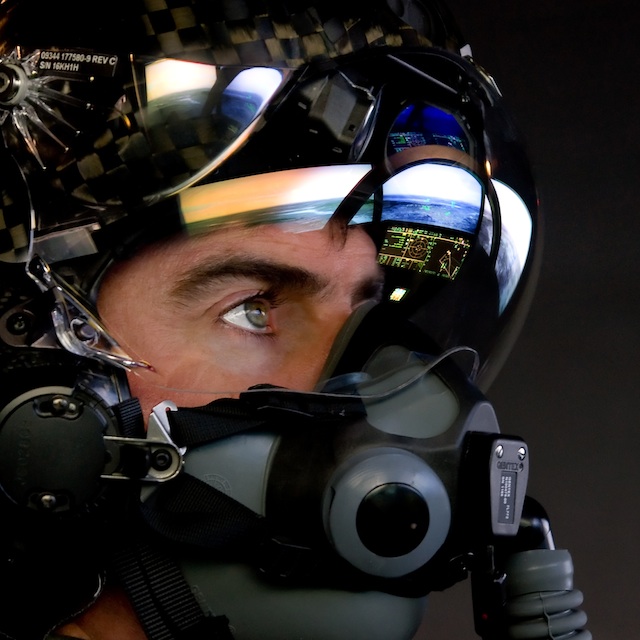The US Air Force is seeking an improved digital helmet-mounted display (DHMD) for pilots, in response to the increasing complexity of aircraft and weapons systems.
In a recent request for information posted on the US government’s procurement website, the USAF says it seeks a helmet that improves pilots’ situational awareness and has features that integrate sensor data to help pilots better identify targets. The helmet system should also monitor pilot health and oxygen and carbon dioxide levels in the helmet.
Oxygen-related issues were found to have caused a series of hypoxia incidents that led to a four-month fleet-wide grounding of Lockheed Martin F-22 Raptors in 2011. An F-22 oxygen system problem also preceded one fatal crash.
However, the USAF's request – posted in February but updated on 13 March – does not say which aircraft the helmet would be used for, and the service did not immediately respond to a request for more information.
“The government is interested in receiving information on a broad array of technologies that have the potential to enhance aircrew warfighter operational capabilities in fixed-wing and rotary-wing aircraft platforms,” says the request.
“As weapon systems have become increasingly complex and aircrews are exposed to extensive amounts of battlespace information, it has become clear that a significant effort is necessary to provide a revolutionary leap in [DHMD] capability.”

Lockheed Martin
The request says the USAF seeks a new helmet that makes better use of symbol displays – called symbology – and possibly uses “conformal”, or three-dimensional, symbols.
Also of interest is eye tracking technology that would allow information to be presented where pilots are looking, rather than where they are facing, says the USAF.
The service also wants a helmet that digitally incorporates night vision capability, and one that collects information gained from a variety of sensors, including mid-wave and long-wave infrared sensors and light detection and ranging (LIDAR) sensors, says the request.
The USAF wants that information to be processed using algorithms that would help the pilot to better detect and identify ground objects, such as vehicles, humans, terrain hidden by fog, haze or dust, as well as objects concealed by floors and vehicles, says the service.
In addition, the system should be able to distinguish whether humans or vehicles are friend or foe, says the notice.
It would also have cognitive and physiological pilot monitoring that would identify, and prevent mishaps caused by pilot fatigue, cognitive overload, unconsciousness or spatial disorientation. The eye tracking system could potentially monitor vigilance and sleepiness by monitoring blinking and the amount of time a pilot’s eyes are closed, says the request.
The USAF is interested in monitoring heart activity with electrocardiogram data and brain activity with electroencephalography data.
The helmet system could also monitor “galvanic skin response” – used to identify sweat – blood flow, hydration and mask oxygen and carbon dioxide content, says the USAF.
In 2011, the service grounded all F-22s due to hypoxia incidents later attributed to issues with the aircraft’s onboard oxygen generation system and the pilot’s upper pressure garment. The grounding followed an F-22 crash in November 2010 that was preceded by failure of an oxygen sensor. That crash killed the pilot.
The USAF blamed the crash on the pilot, saying he failed to activate an emergency oxygen supply, but a later Pentagon report found the service’s conclusions were based on insufficient evidence.
Lockheed, which is integrating a helmet-mounted display from Vision Systems International (VSI) into its F-35 Joint Strike Fighter, says it does not know which aircraft the new helmet is intended for.
Rockwell Collins, which joined with Elbit Systems to form VSI, could not be reached for comment.
The helmet for the F-35, the only fighter that currently has a digital helmet-mounted display, suffered developmental delays sufficient to lead the military to seek an alternative helmet in September 2011.
BAE Systems proposed a design, but the F-35’s programme office decided in October 2013 to stick with VSI.
Lockheed says the latest “third-generation” VSI helmet is progressing, noting that it plans to flight test the helmet in an F-35 in the third quarter of this year.
Features of VSI’s helmet include symbology, a virtual head-up display, mounted night vision and real-time video that is integrated with the aircraft’s 360˚ situational awareness system, says Lockheed.
Source: FlightGlobal.com























